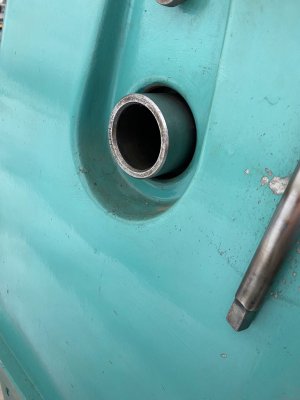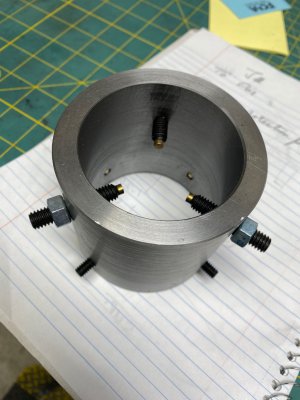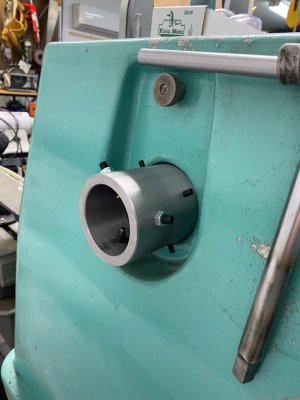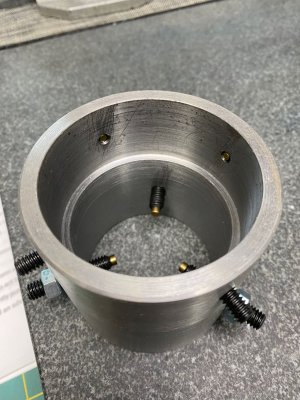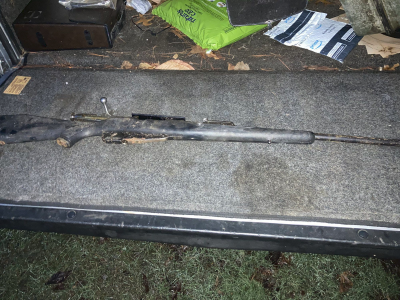Mac, what was the Isro k98 bbl chambered for, .30-06?
A sleeve job is one thing, it retains the exterior and provides a functional rifle. Rebarreling probably isn't the way to go on an octagonal 1889, but octo barrel blanks are available without additional costs over a cylinder blank. That would give you a non-original but mechanically sound shooter. Without doing any sort of setback and re-chamber (which isn't even possible on most lever guns), you can counterbore the muzzle and end up with a non-original non-shooter. That's kind of the worst of all scenarios.
What if I told you I had a clean, hand-flaked toolroom Monarch EE8, and wanted to do an ELS conversion with a DC main treadmill motor swap and DRO... and I would drill and tap all mounts and re-cut bearing caps to accommodate cheap metric bearings because they are easy to get. Okay, that would end up as a working lathe, but is it the right machine to cut up? Would any observers shed tears along the way?
Surplu NOS Israeli 7.62( 308 win) NATO k98 barrel.
Israeli K98 large ring Mauser Barrel, 23.5 length, 7.62 NATO, In The White, *New Old Stock*. Sold Individually.These are great upgrade barrels for your large ring M98 Mauser action!Show some signs of wear from storage; marring, scratches, surface rust, grime, etc... Parts must be inspected and...

www.apexgunparts.com
I mainly shoot light gallery loads with trailboss powder and some 110gn 308s I picked up cheap in large amounts years ago. Nice 100 yard hole maker
The K98 as it stood was a mis matched painted Russian capture I picked up for $150 with a few thousand rounds of 8mm surplus ammo. I sold the old corrosive ammo I sold a few years later to recoup the cost of the rifle. The owner said it never shot well and the ammo was iffy.
I ended up shooting cast bullets through the 8mm cal/bore over sized and was able to get it down to 4 moa. When these nato barrels popped up for $90 it was a no brainer. Not a authentic re built Israeli NATO rifle but not out of line with " history" lol
as far as the lathe conversion ? Its tough if the lathe was some what useless as it stands and cost to "rehab" it to function vs sitting around waiting to part it out or go unused? Its a toss and all personal.
If I was partial to 1889 marlins and 38-40 for shooting and putting a smile on my face I would source a 1889 shooter. They come up here and there around here and are mostly steel wool scrubbed basement resto pieces. Run about 650-900 for a good bore.
Wall hangers are running about 350-500
with old worn bores I try to regain as much accuracy as possible by casting bullets that fit the wear better.
theres a slew of shooters on castboolits.com that are masters at getting old iron shooting better with proper sized cast bullets.
Im not good at videos or tracking progress with pictures, Heres a more recent poor thing to cross the threshold.
Amazingly it dod shoot and I was able to put the first 10 rounds on paper at 100 yards into a 6" group. very surprised


